It’s time to create more equitable schools








Leadership for Educational Equity – 5 Tips
Creating more equitable school districts is more critical than ever. Studies show that schools are facing a retention crisis that goes beyond teachers and counselors—education leaders are also leaving their roles in record numbers. And despite increased student diversity, there’s still very little diversity at the leadership level.
It makes sense that this disparity affects districts at all levels. For education leaders, equity is fundamental—it’s your duty to break down barriers to education, promote equity at scale in your district, and be prepared to serve a diverse student population.
“As student demographics are changing, we need to better prepare our leaders for culturally relevant leadership practices. The status quo is unacceptable, and we must have the courage to be a little uncomfortable and stretch ourselves to better understand and serve an increasingly diverse student populace.”
Although challenging, there are strategies to help ensure equitable districts and classrooms. Read on to discover 5 strategies for promoting equity in education.
See ThoughtExchange in Action — Watch the Product Tour
In this Article
- What is the goal of educational equity?
- The role of leadership in equity
- 5 ways to promote equity in education
- Consider your own beliefs
- Establish an inclusive environment early and create a community of trust
- Use student voice in curriculum planning
- Reduce common barriers to learning
- Choose the right technology
- Improve equity in education with ThoughtExchange
What is the goal of educational equity?
According to the World Health Organization, “Equity is the absence of unfair, avoidable or remediable differences among groups of people, whether those groups are defined socially, economically, demographically, or geographically or by other dimensions of inequality (e.g. sex, gender, ethnicity, disability, or sexual orientation).”
So, educational equity aims to offer individualized student support that addresses barriers, like poverty, language aptitude, mental health, ethnicity, gender, or limited transportation. Educators need to create an even playing field and employ the right strategies to ensure that all students are prepared to reach their full potential.
The role of leadership in equity
Leadership sets the tone for progress toward district goals and has a fundamental impact on students. Education leaders oversee all aspects of the organization, ensuring schools run smoothly, and motivating their people to contribute to an equitable, successful district.
To illustrate, one key aspect of a principal’s job is to ensure school resources accelerate and sustain learning– essential for achieving education resource equity. To achieve this, schools, systems, and communities need to work together to ensure the right combination of resources create high-quality learning experiences for all students. This helps give every child the tools and opportunity to achieve their goals.
5 ways to promote equity in education
Consider your own beliefs
To start, reflect on yourself. What are your beliefs and how do they impact the way you run your school or teach your students? Do you struggle with biases as a result of your training or upbringing?
In an article about promoting equity in the classroom, USC addresses the importance of considering your own beliefs before creating a more equitable learning environment. Even teachers with the best intentions may have blank spots.
For example, white teachers may not understand historically marginalized students’ challenges due to lack of experience and training. They may also attribute lack of success to deficiencies that they associate with students of color.
USC maintains that “understanding your own positionality, or the circumstances that create your identity in terms of race, gender, and ability, can help you become more conscious of issues related to racial equity and gender equity, and help you support students in your class.”
Establish an inclusive environment early and create a community of trust
To be most effective, start your equity work early and focus on creating a community of trust. Creating an equitable, inclusive, and respectful learning environment is ongoing and should be established at the beginning of a child’s school life for best results. As an education leader, it’s your job to challenge the status quo and create a new normal.
Let your students know from the start that you and your teachers are committed to creating an inclusive space for learning. Ensure discussions represent a variety of views, and students feel comfortable expressing themselves.
Maintain a respectful learning environment by making it clear that personal attacks, name-calling, and hostility are unacceptable. Students must interact with respect— this yields more open and productive conversations. By establishing expectations early on, students should understand their role in creating an inclusive classroom. Safe, inclusive environments benefit learning ability.
Tip: To create a community of trust, consider using a survey and engagement tool like ThoughtExchange to include student voice in your discussions. Enhancing and broadening access builds inclusivity and trust. It also ensures students know you care about their needs and opinions and that they’re part of the conversation from the beginning
Use student voice in curriculum planning
To create engaging and equitable lessons, student voice is critical. Let students have a say in their curriculum to promote interest in learning and empowerment. Listening to students and giving them choice helps them get engaged in their learning and promotes equity.
A great way to tap into student voice, and get critical insights for curriculum building is to ask your students what interests them and what they need to succeed. A survey and engagement platform like ThoughtExchange allows leaders to share questions with 10-10,000 students and gather their interests and ideas in a safe, anti-biased environment.
Students can vote on the ideas of others—and the most supported ideas rise to the top. Education leaders will discover what their students really want and need and can build curriculum around their findings.
Reduce common barriers to learning
Worried you’re unintentionally excluding students of color, female students, or students with disabilities in your classroom? Consider these tips for reducing barriers to learning.
Diversify your curriculum
Expose students to a diverse spectrum of writers, artists, and thought leaders. Consider ethnicity, gender, ability and more when putting together your curriculum. And of course, include your students in the planning process when possible. According to USC, "you’ll more accurately represent the different contributors to your class’ subject, and potentially establish a cultural connection for your students."
Present information in diverse formats to ensure accessible learning
Make sure all students can access the learning you’re bringing to the class. Consider captioning videos, including alt text, and transcribing videos and lectures. Also remember to check tools for accessibility options. Many modern tech companies are including accessibility features in their services. If you have students who speak other languages, consider using programs with multilingual capabilities. Also take into account that all students don’t learn the same way and create learning formats to meet their needs.
Expect the best of your students
Respect your students’ potential and hold them accountable. USC reports that students of color report being held to lower expectations than white students and female students hear more comments about their appearance than their academic skills. By setting high achievement standards for all students, you encourage them to engage with your class, and avoid stereotypes of what they’re capable of accomplishing.
Avoid assumptions about students’ backgrounds
Avoid making assumptions about your students’ life experiences. Assuming they have similar experiences can be problematic. USC reports that "schools with large student populations may represent a greater variety of racial and economic backgrounds, varying abilities, as well as students with undefined gender identities."
Choose the right technology
For many, technology has become an integral part of the classroom. While it can be a useful way to engage students, consider its impact on those with language barriers or physical disabilities.
While screen readers can assist students by opening resources, other digital tools that are not compliant with accessibility standards such as clicking, dragging and dropping, may present barriers. Review Web Content Accessibility Guidelines to ensure your tech is compliant and accessible to students with physical disabilities. Eliminate language barriers by using tech with multilingual capabilities.
Improve equity in education with ThoughtExchange
For education leaders, promoting educational equity is fundamental for district and student success. It’s your duty to make equity a priority in your district and be prepared to serve a diverse student population.
To ensure success, leaders at all levels need to examine their own biases, strive to create an inclusive trusting environment early on, listen to their students, reduce learning barriers, and be mindful of technology. Tap into your community’s collective intelligence to create more equitable schools.




